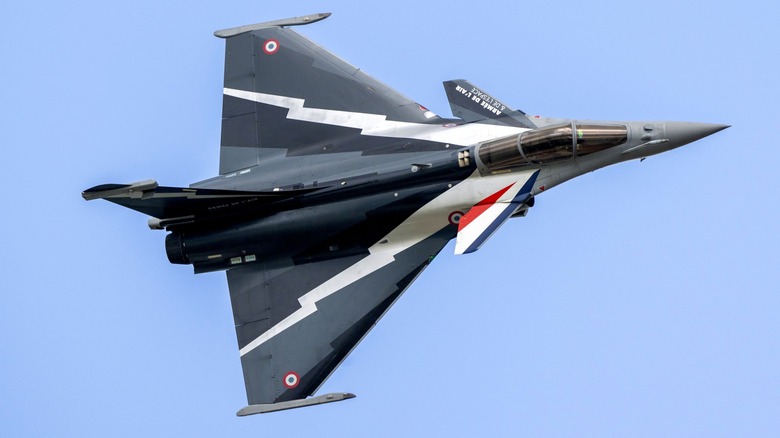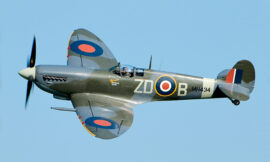The Dassault Rafale is a multirole fighter aircraft developed by the French company Dassault Aviation. It is designed to perform a wide range of missions, from air superiority and interdiction to reconnaissance, ground support, and nuclear deterrence. The Rafale is notable for its advanced avionics, versatile armament, and aerodynamic design, making it one of the most capable fighter jets in service today.
Development and Design
The development of the Rafale began in the 1980s as part of France’s effort to create an independent defense capability, reducing reliance on foreign technology. The Rafale project aimed to replace a diverse array of aircraft in the French Air Force and Navy, including the Mirage F1, the Jaguar, and the Super Étendard.
The first prototype of the Rafale, the Rafale A, flew on July 4, 1986. This prototype was used to test and refine the design, leading to the development of three main variants: the Rafale C (single-seat land-based version), the Rafale B (two-seat land-based version), and the Rafale M (single-seat carrier-based version).
Aerodynamics and Design Features
The Rafale features a delta wing configuration combined with active close-coupled canard wings. This design provides excellent agility, stability, and control at both high and low speeds. The aircraft’s aerodynamic efficiency is further enhanced by the use of advanced materials, including composites, which make up a significant portion of the airframe and reduce weight while maintaining structural integrity.
The Rafale’s aerodynamic design allows for a high degree of maneuverability, which is essential for both air-to-air combat and ground attack missions. The canard-delta configuration also contributes to the aircraft’s ability to perform high-angle-of-attack maneuvers and enhances its overall flight performance.
Avionics and Systems
One of the standout features of the Rafale is its advanced avionics suite. The aircraft is equipped with the Thales RBE2-AA active electronically scanned array (AESA) radar, which provides superior detection and tracking capabilities compared to traditional radar systems. The AESA radar can simultaneously track multiple air and ground targets and is highly resistant to jamming.
The Rafale also features an integrated electronic warfare suite known as SPECTRA (Système de Protection et d’Évitement des Conduites de Tir du Rafale). SPECTRA provides the aircraft with comprehensive threat detection and countermeasures, including radar warning, laser warning, missile approach warning, and electronic jamming. This system significantly enhances the Rafale’s survivability in contested environments.
The cockpit of the Rafale is designed with a focus on pilot situational awareness and ease of operation. It includes a heads-up display (HUD), multiple multifunction displays (MFDs), and a hands-on throttle and stick (HOTAS) control system. These features enable pilots to manage the aircraft’s systems and engage targets effectively while maintaining focus on the mission.
Armament and Capabilities
The Rafale is a true multirole fighter, capable of carrying a wide variety of weapons for different mission profiles. It has 14 hardpoints (13 on the Rafale M) that can accommodate a mix of air-to-air missiles, air-to-ground missiles, guided bombs, and other munitions.
For air-to-air combat, the Rafale can be armed with missiles such as the MBDA MICA, the Meteor, and the Magic II. For ground attack missions, it can carry precision-guided munitions like the SCALP-EG cruise missile, the AASM (Armement Air-Sol Modulaire) family of bombs, and laser-guided bombs. The Rafale is also capable of carrying nuclear weapons, with the ability to deliver the ASMP-A nuclear stand-off missile.
The Rafale’s versatility extends to reconnaissance and electronic warfare roles as well. It can be equipped with various pods, such as the Thales Reco NG reconnaissance pod and the Damocles targeting pod, to perform ISR (intelligence, surveillance, and reconnaissance) missions and support precision strikes.
Operational History
The Rafale entered service with the French Navy in 2004 and the French Air Force in 2006. It has since been deployed in various combat operations, demonstrating its effectiveness and reliability. The Rafale has seen action in Afghanistan, Libya, Mali, Iraq, and Syria, where it has performed a range of missions from air superiority and close air support to reconnaissance and precision strikes.
One of the notable operations involving the Rafale was the 2011 military intervention in Libya, where it played a key role in enforcing the no-fly zone and conducting air strikes against ground targets. The Rafale’s performance in these operations has been widely praised for its versatility and effectiveness.
Export Success and International Operators
In addition to serving with the French armed forces, the Rafale has been exported to several countries. Key international operators include:
- India: In 2016, India signed a contract for 36 Rafales, with deliveries beginning in 2019. The Indian Air Force values the Rafale for its advanced capabilities and versatility.
- Qatar: Qatar ordered 36 Rafales, with deliveries starting in 2019. The aircraft bolster Qatar’s air defense and strike capabilities.
- Egypt: Egypt has also procured 24 Rafales, enhancing its air force’s operational capabilities.
These export deals underscore the Rafale’s reputation as a highly capable and versatile fighter aircraft.
Conclusion
The Dassault Rafale stands out as one of the most advanced and versatile multirole fighters in service today. Its combination of cutting-edge avionics, powerful armament, and exceptional aerodynamic design make it a formidable asset for any air force. The Rafale’s operational history and export success further attest to its capabilities and reliability, solidifying its place as a key player in modern military aviation.



